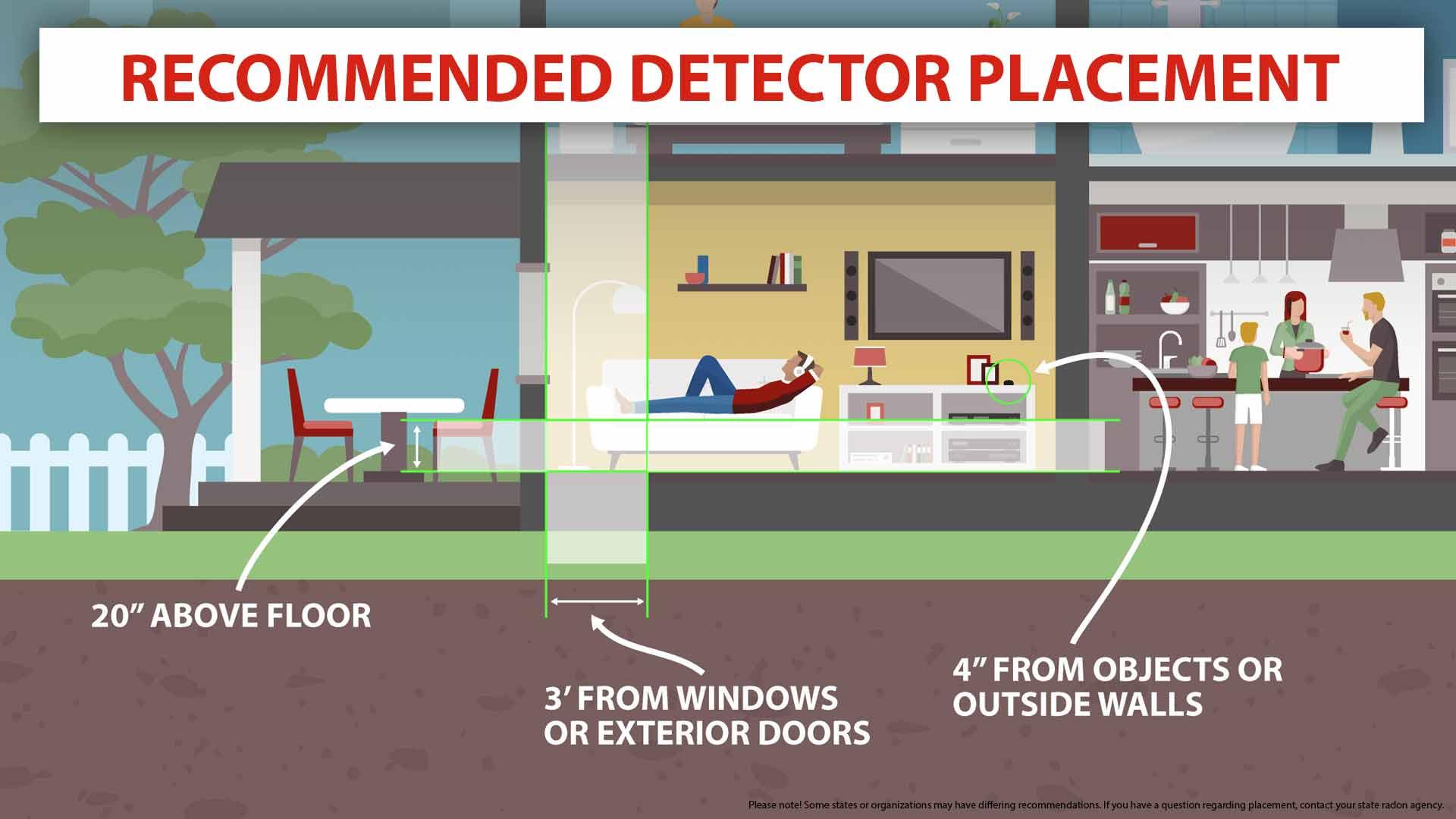Where Should a Radon Test be Placed?
Radon home testing is the best way to protect you and your family from unnecessary lung cancer risks. While our home tests are easy to use and come with complete instructions, many people still want to know where radon tests should be placed before they make a purchase. These tips on the best placement of detector kits will prepare you for the process and assure you that it's easy to handle on your own. Regardless of why you need to test for radon or the layout of your home, here's what you need to know about radon test placement.
Recommended Placement of the Detectors
Our radon tests are highly accurate and easy to use, but placement is important for getting correct readings. Making a mistake could give you a false negative reading, letting you believe you're breathing in safe air while you're actually inhaling unsafe levels of radon. Placement mistakes rarely create false positive readings, but it could be possible if you place the test in too small of an area in an unoccupied basement or too close to a known radon source like an unsealed sump well.
Aim to place at least one test kit in the largest central living area on the lowest occupied level of the home that receives air flow from the rest of the space. Additionally, you may want to test the floor you occupy the most to see if and how your radon level is dissipating as it moves from floor to floor. This gives you a general reading of the home's entire air supply. If you're concerned about radon in a specific area, you can place the test in that room or floor. However, a specialized test focused on one room or floor isn't a replacement for a general test in a central area.
Additional Information for Your Radon Test
- Is your basement occupied? Make sure you're including it in your radon testing area. Place at least one test in the lowest area of the home used on a regular basis. If you have a large home, you may want multiple detectors to obtain radon levels in different areas of the home.
- Radon can enter your home through areas at ground level or above a crawl space, so you’ll want to test these areas in addition to your basement.
- Place the test kit on a shelf or table against an interior wall that is free from ventilation sources like vents or air returns. Keep the test at least three feet away from all windows, doorways, and exterior walls. Placing the test in a draft or near a window introduces too much fresh air to accurately measure your indoor air levels. Going in and out of the house won't hurt, but for short term measurements, QuickScreen and Rapidos, keep windows closed during the test period for accurate readings.
- Place the test at least 20 inches above the floor and two feet below the ceiling. Make sure pets, children, and family members can't move it or play with it.
- "Should I hang the radon detector?" It's not necessary, but it is easy thanks to the hook built into the top of our detectors. The results will be the same as long as you follow the placement tips. This is a great option if you're lacking free table space or need to keep the tests away from curious pets.
- Installing the detector is as simple as removing it from the airtight packaging and placing it. The test becomes active immediately upon opening, so do not open the plastic pouch until you are ready to begin your test. When the test period is complete, pack the test up in the pre-addressed mailer and send it off to our labs.

